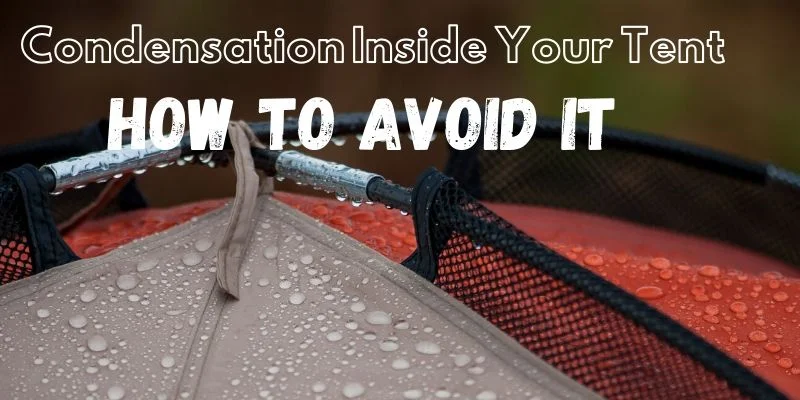Condensation inside your tent - how to avoid it

Condensation is a problem most campers will experience to some extent at some time in their camping life.
Often it can be avoided!
In this article, we hope to explain simply, why condensation occurs and then how to avoid it.
The first time you experience condensation inside your tent, the natural reaction is to think that it's leaking and possibly faulty? After all, why is the inside of your tent so wet?
Usually, this is not a leaking issue at all, but is a condensation problem.
The simplest way to test if that is the case is to set your tent up at home, and thoroughly water it with your garden hose.
We recommend doing this prior to taking your new tent camping. If it doesn't leak at home, but you get water inside the tent at the campsite, you can trace the cause to condensation, and fix the issue for the next night's sleep.
Sometimes, during this testing process, you might find your tent is leaking slightly from a stitching point. This is pretty easy to solve, by using one of a range of seam sealers (most hardened campers seam seal their factory produced tents as a matter of course before heading out on big trips).

Setting up your tent at home for the first time is a great way to familiarise yourself with your new tent. Setting it up at home also means that if you need to you can deal with any problems you may find with the tent prior to heading on holidays. Just make sure you pack away everything back into its bag.
It also means you can set your tent up at the campground quickly and simply, making even the most inexperienced camper look like a veteran!
WE DO HAVE GOOD NEWS! Condensation can be mostly avoided if you just take these simple precautions:
- Never close all of your tent windows. Keep as many open as possible at all times. To avoid condensation, you want to try having the inside air temperature the same as outside. Having venting available means the warm air you exhale can escape the inside of the tent, reducing the chance of condensation forming and then dripping off the roof. Any good tent available in
- Australia, will always have great ventilation options available. Be aware, that a couple of people asleep in a tent, produce enough warm air from exhalations to cause quite a pool of water in an enclosed tent.
- Keep wet clothing out of the inside of the tent. The evaporating moisture from the wet clothes, will form condensation on the roof.
- Avoid cooking inside your tent. Obviously it's dangerous having naked flames inside the tent, but it will also heat up the inside of the tent and cause condensation to form.
- Please remember, tents are not designed primarily to help you stay warm, but they are designed to protect you from the wind, rain, insects and to provide you with privacy. To stay warm, the best thing is a good hooded sleeping bag, thermal underwear and maybe a beanie.
- If you do get condensation forming, then wipe dry with a good micro-fibre towel (which are light and easy to pack)
I hope this post helps you understand how to best use your tent, and avoid condensation. We have an informative video linked below that may also help you.
